These are 14 Trees with Fern-like Leaves [Pictures & Details]
Have you noticed any tree that possesses leaves like a fern? From the very beginning, people search for similarities in different species of trees.
We know that usually, other tree species have different types of foliage. But sometimes they are matched with one another. In this article, we have mentioned some tree species which have fern-like leaves.
You will also get all the answers related to this from here such as whether the trees having fern-like leaves resemble the whole plant or just in the case of leaves. So, let’s start.
How are the fern leaves?
To compare other plants’ leaves with the fern leaves, you must know the fern leaves such as shape, color, surface quality, petiole, etc. A fern leaf which is also called a frond.
The fern leaves are almost linear in shape and light green. The leaf surface is a little rough and not waxy. Besides, their petioles which connect the leaf to the stem are long.
Again, the leaflets are also arranged in the midrib and the frond tip is called the apex. Sometimes, some pores are also produced in the fern leaves which help for the reproduction of the fern plant.
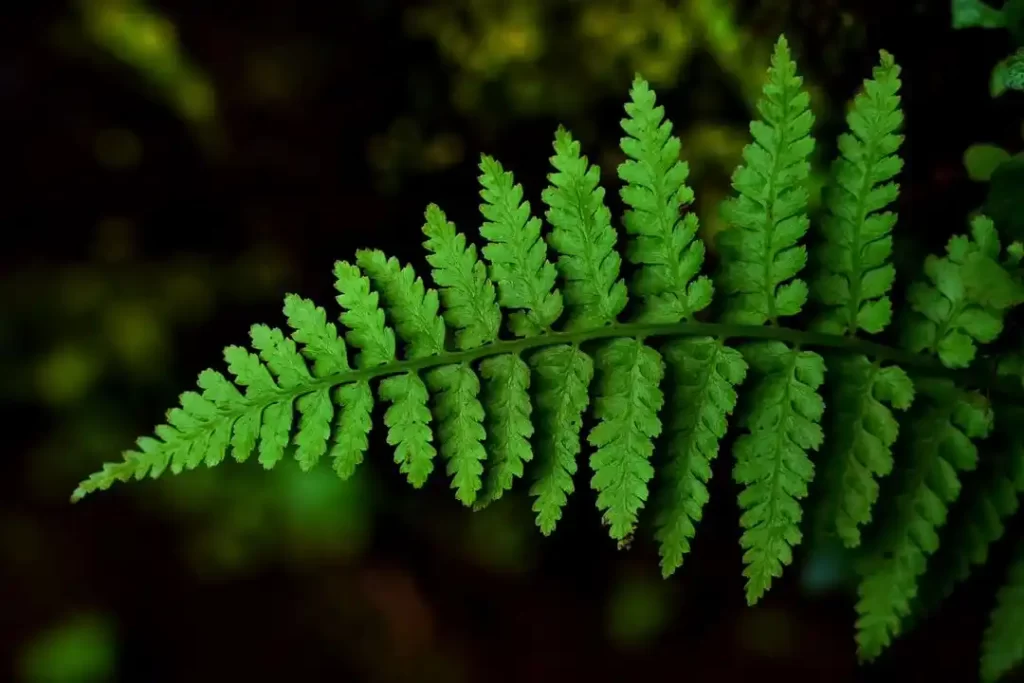
Trees with fern-like leaves
You will be surprised to know that there are some trees whose leaves resemble fern leaves a lot. Some perennial trees growing in different climates may exhibit such similarities are mentioned below.
- Persian silk tree or mimosa
- Blue jacaranda tree
- Bald cypress tree
- Royal poinciana tree
- Copper pod tree
- Fern-leaved wattle tree
- Japanese fern tree
- Maidenhair tree
- Royal fern tree
- Tree of Heaven
- Dawn Redwood
- Sweet Fern
- Soft fern tree
- Fern pine columnar tree
Let’s know deeply about them.
Persian silk tree (Albizia julibrissin)
The Persian silk is a leguminous tree also known as the pink silk tree mimosa or silky acacia. It is native to Southeastern and Eastern Asia but widely found in the United States and Italy.
The leaves are fern-like green color, 8-18 inches in size, and bi-pinnate dividing into 6-12 pairs of pinnate containing 20–30 pairs of leaflets on each.
These fern-like leaves combined with fluffy pinkish flowers increase the beauty of any garden. Again, the leaves also get closed when touched or at night which is a unique nature.
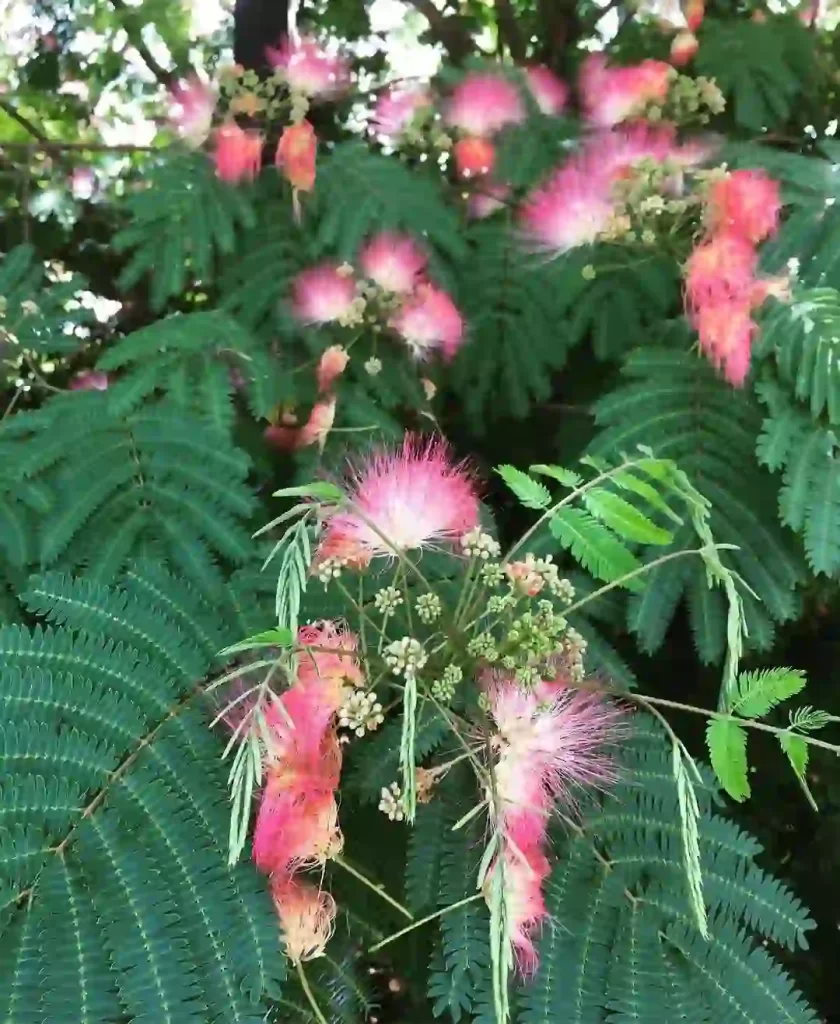
Blue jacaranda tree (Jacaranda mimosifolia)
Blue jacaranda is also known as the jacaranda or mimosifolia or black poui or nupur fern tree. It is native to South America but nowadays also found in Australia, Hawaii, Florida, Southern California, and certain parts of Texas and Africa such as Zambia and Kenya.
It is mainly popular for its fern-like bright green, and bi-pinnately compound leaves. They can be up to 20 inches long with 8-26 leaflets. These leaves with their attractive purplish-blue flower produced in panicles can make the garden eye-catching.
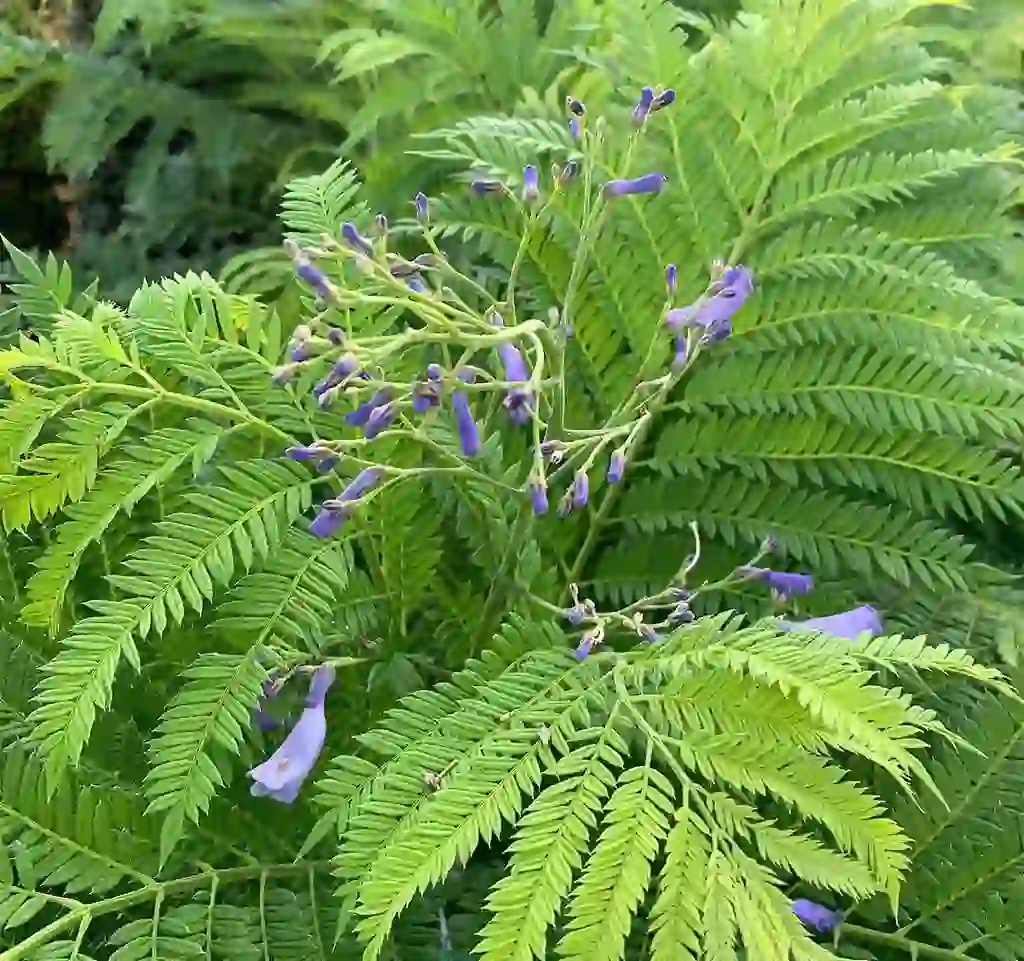
Bald cypress tree (Taxodium distichum)
Bald cypress is a large pyramidal tree known as swamp cypress, gulf cypress, red cypress & tidewater cypress which is native to the southeastern United States.
The tree has needle-like, alternatively arranged, and medium green leaves which resemble fern leaves. It grows ½ to 1 inch long individually from the twig with feathery surfaces.
These bright green leaves give a beautiful greenery vibe to the garden in the spring. Besides, these leaves also enhance the beauty of the garden by changing to a copper-red color before falling off.
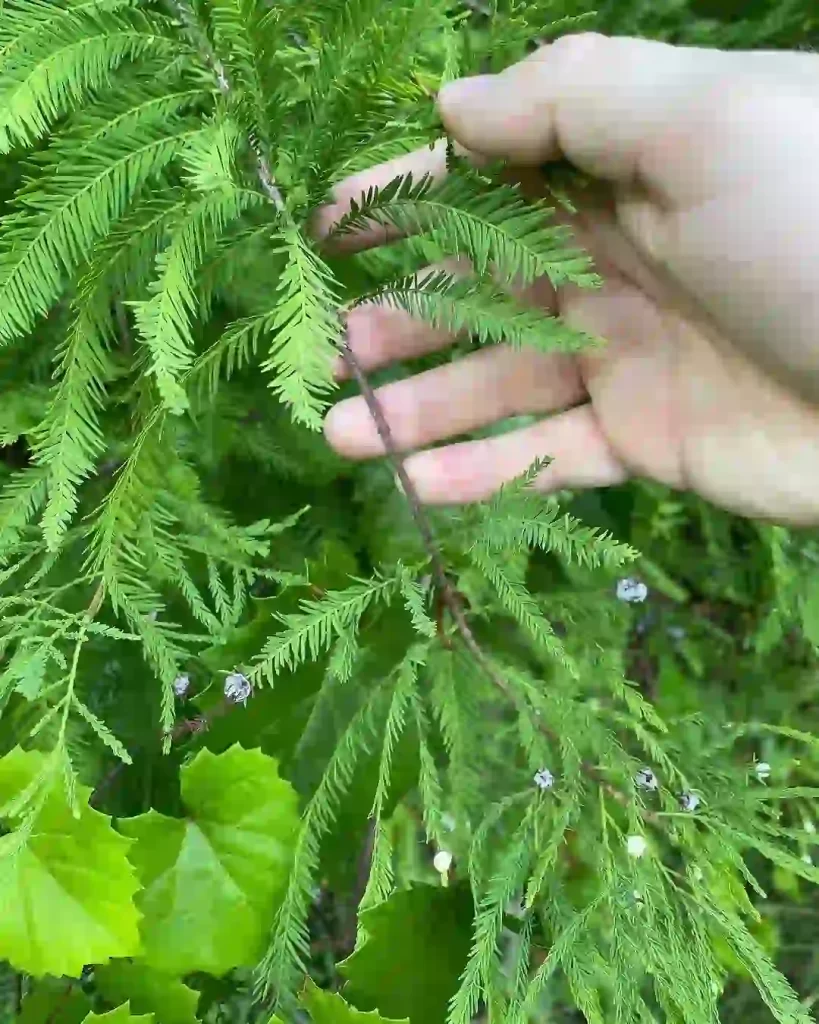
Royal poinciana tree (Delonix regia)
This is an ornamental tree also known as the phoenix flower, flame of the forest, flame tree, or peacock tree that originated in Madagascar.
The leaves of the poinciana tree are fern-like, compound, bi-pinnate, and glossy bright green having a feathery surface. Each leaf is 12-20 inches long with 20-40 pairs of primary leaflets and each is divided into 10-20 pairs of secondary leaflets.
Moreover, these glossy green leaves along with their flamboyant orange-red flower make any garden very eye-catching.
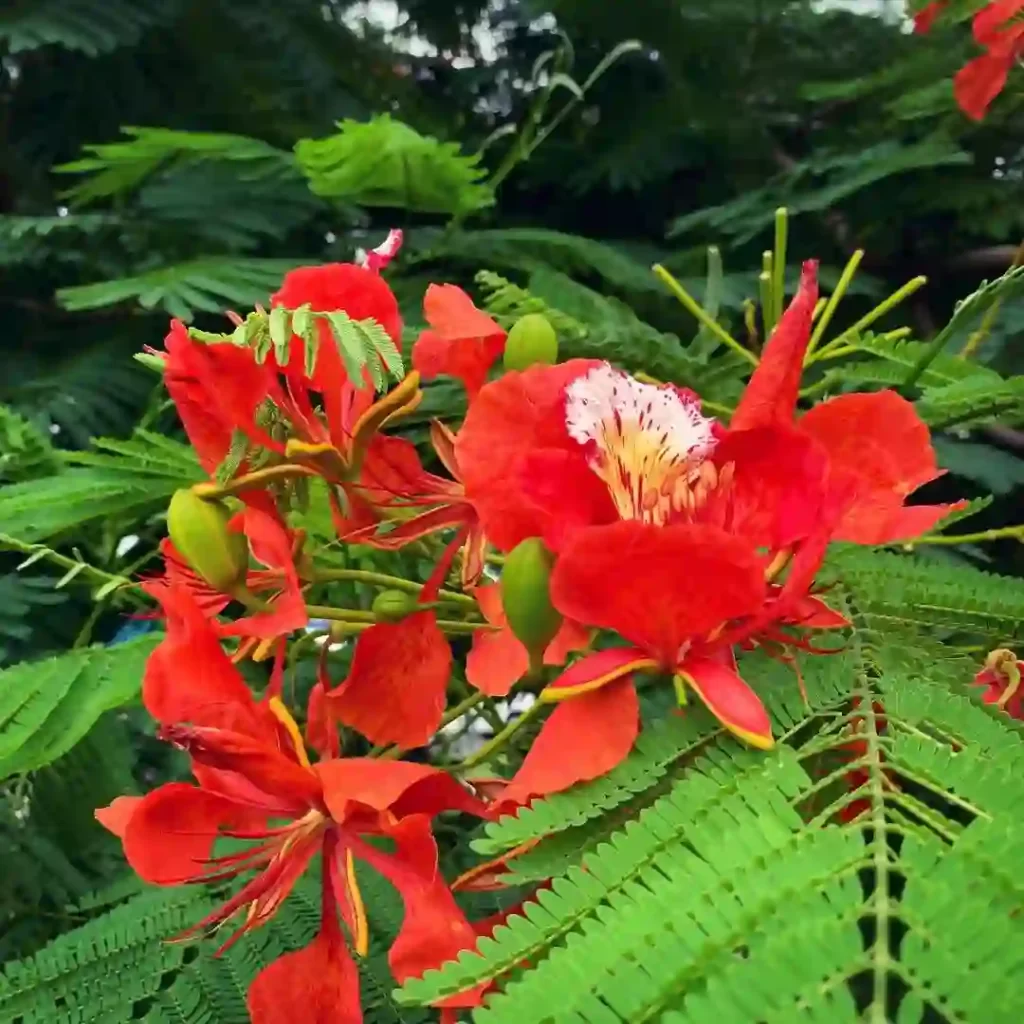
Copperpod tree (Peltophorum pterocarpum)
Copperpod is a leguminous tree that is also known as the yellow-flamboyant, yellow flame tree, yellow poinciana, and yellow-flame and native to Southeast Asia.
The leaves of the copperpod are fern-like, bipinnate, dark green, around 30-60 cm long with 16-20 pinnate. Besides each pinna has 20-40 oval-shaped and feathery leaflets which are 8-25 mm long.
These green fern-like leaves with beautiful yellow flowers emerged in a raceme making the garden stunning. Thus it is used as an ornamental tree for enhancing the beauty of a house.
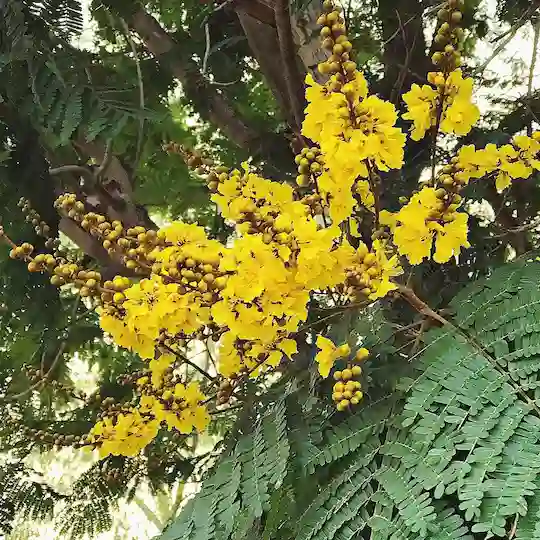
Fern-leaved wattle tree (Acacia filicifolia)
Ferns-leaved wattle is an erect shrub or tree that is native to Australia. The leaves are deep green and compound with a petiole of 7–23 mm long between one and five prominent glands.
Besides, the rachis of the leaf is 40–120 mm long with irregularly scattered glands and 5-14 pairs of pinnae. Again, each pinna has 25-100 pairs of pinnules. The leaf blades are narrow oblong to linear in shape.
These green leaves with gentle-yellow or bright-yellow colored wattle flowers always make a beautiful appearance in spring.
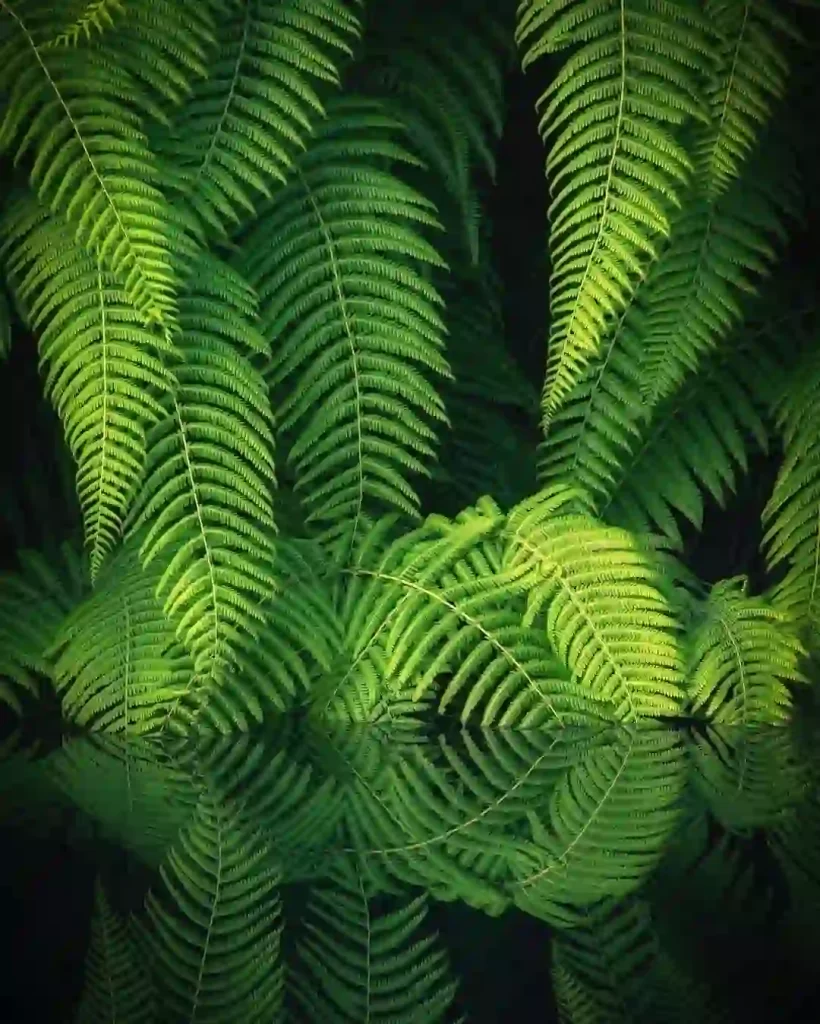
Japanese fern tree (Filicium decipiens)
A Japanese fern tree is a bushy tree creating a globe shape originating from East Africa and South Asia. It is one type of shade tree known as thika palm, pihimbiya.
This tree is mainly identical for its pale green and odd foliage. Though this tree is not a fern, the leaves are pale green and tightly compacted together.
These long and thin leaves protruding from the stems like ferns with their small, clustered, and white flowers give the tree a unique crown look.
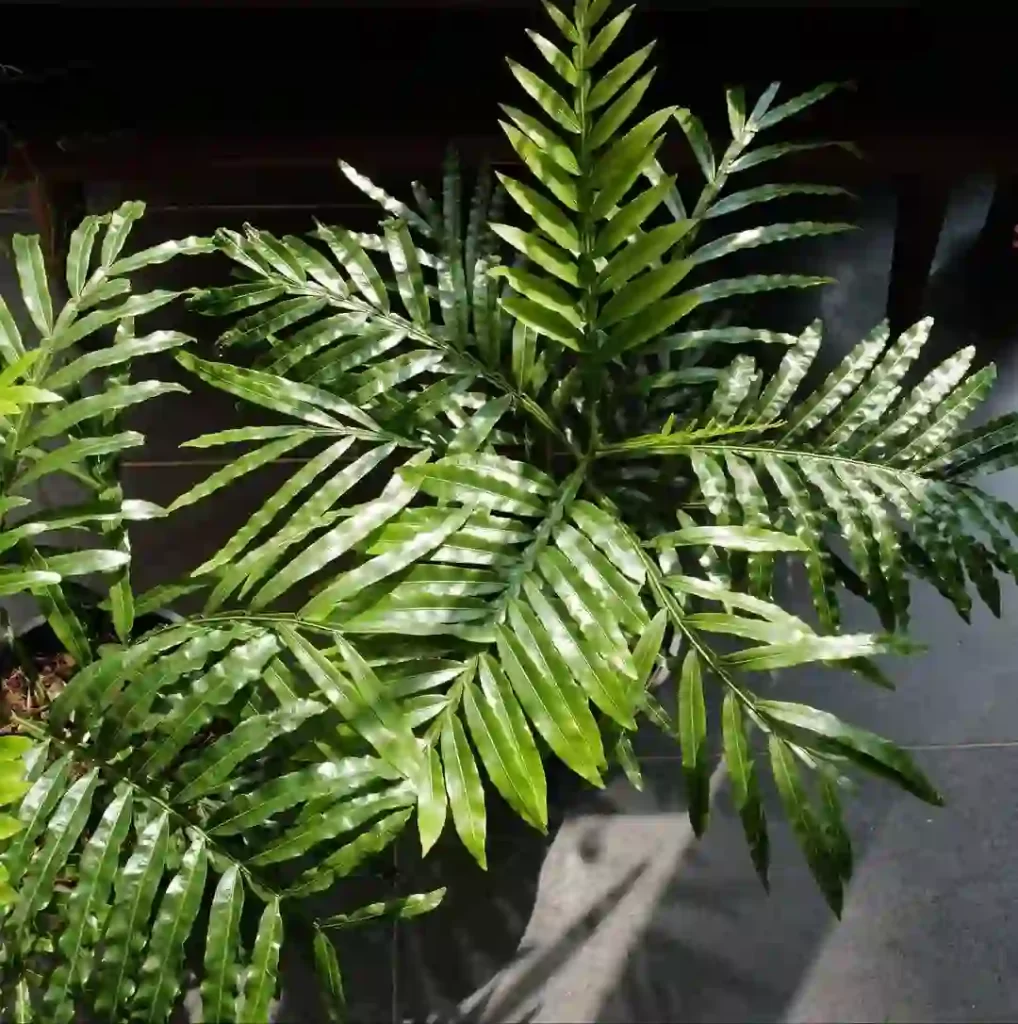
Northern Maidenhair tree (Adiantum pedatum)
Northern Maidenhair is a most sought species of native fern. It is also known as the five-fingered fern or American maidenhair fern native to the moist forests in eastern North America.
The maidenhair has delicate, 8-30 inches long, graceful, and bright-green fronds, with dark shiny-green stems. The fronds spread their pinnae horizontally in a circular pattern.
The fronds are divided into 2 leaf blades having 2-9 leaflets arranged in a horse-shoe or semi-circular pattern. This unique fan-like pattern makes them identical to other native ferns.
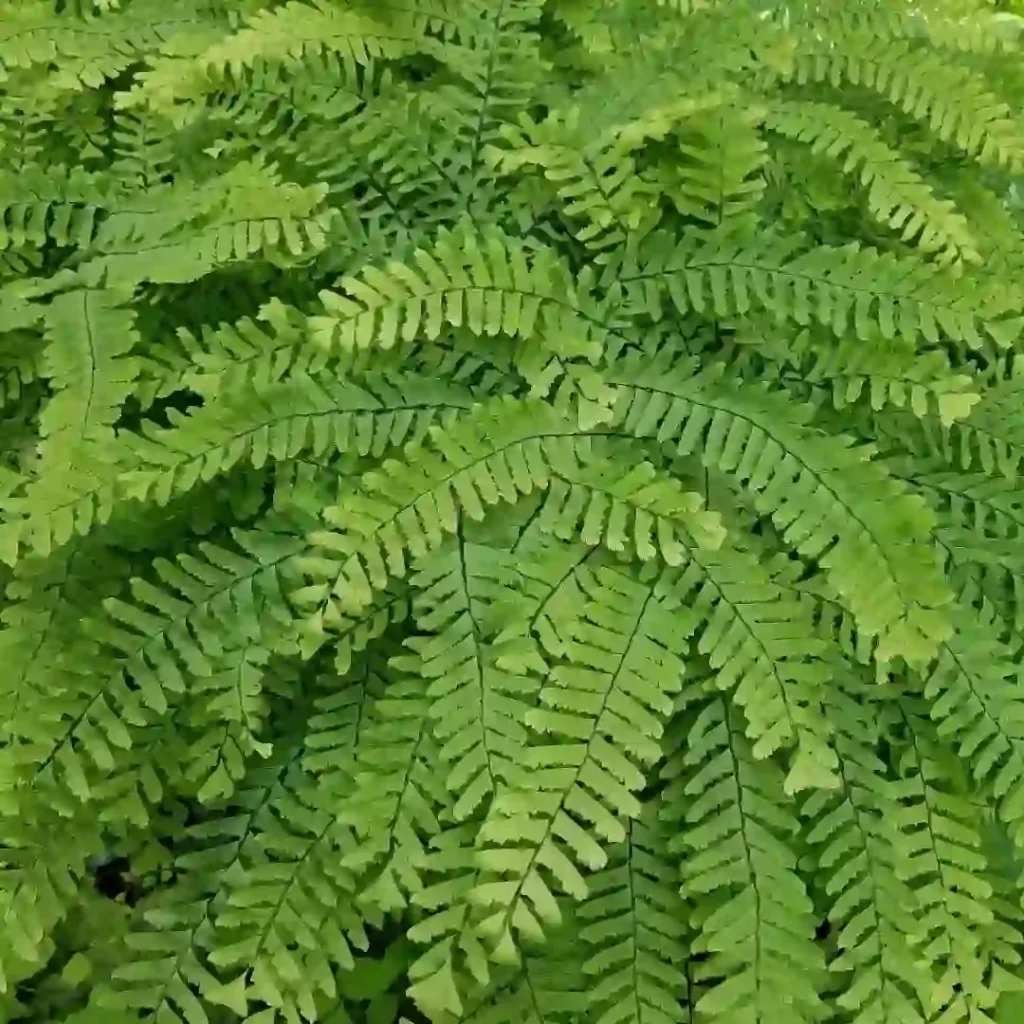
Royal fern tree (Osmunda regalis)
The Royal fern is a robust and deciduous species also known as a flowering fern. It is native to Europe, Africa, and Asia.
The royal fern leaves are bright green. It has a unique form and texture for its two separate fronds- fertile fronds and sterile fronds.
The sterile fronds are 24–63 inches tall and 12–16 inches wide. They are bipinnate with 7–9 pairs of 12-inch long pinnae bearing 7–13 pairs of pinnules.
Again, the fertile fronds are erect and shorter than sterile fronds. It contains 2–3 pairs of sterile-pinnae at the base and 7–14 pairs of fertile-pinnae above.
The densely clustered sporangia of these fronds look like flowers and make the plant beautiful.
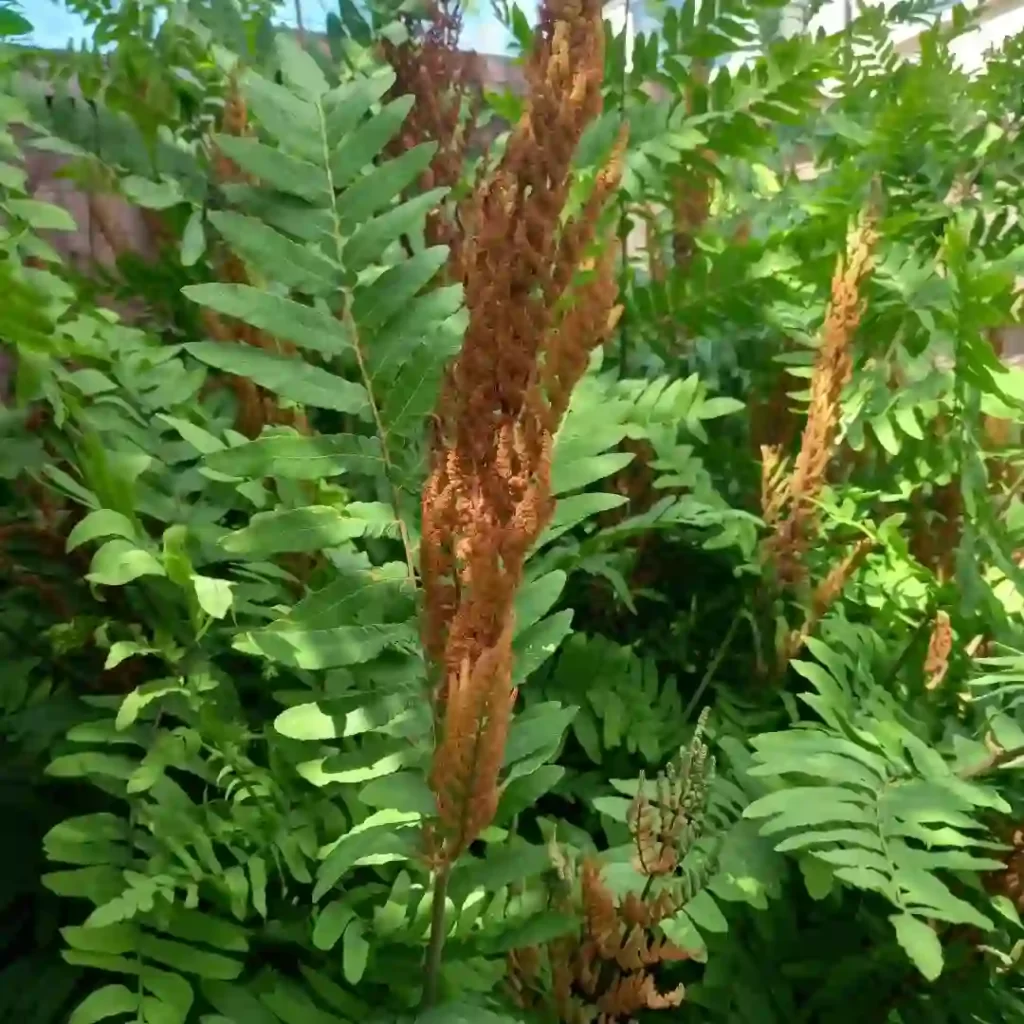
Tree of Heaven (Ailanthus altissima)
The tree of Heaven is a beautiful but invasive plant. It is also known as a copal tree, stinking sumac, Chinese sumac, or paradise tree, and native to northeast and central China, and Taiwan.
The leaves are dark green, fern-like large, alternatively arranged, and pinnately compound with thick smooth petioles. They contain 13-40 ovate-lance-shaped leaflets having smooth edges.
The leaflets have blunt glandular teeth at the base of each leaflet. This smooth leaflet margin differentiates them from similar native trees having compound leaves.
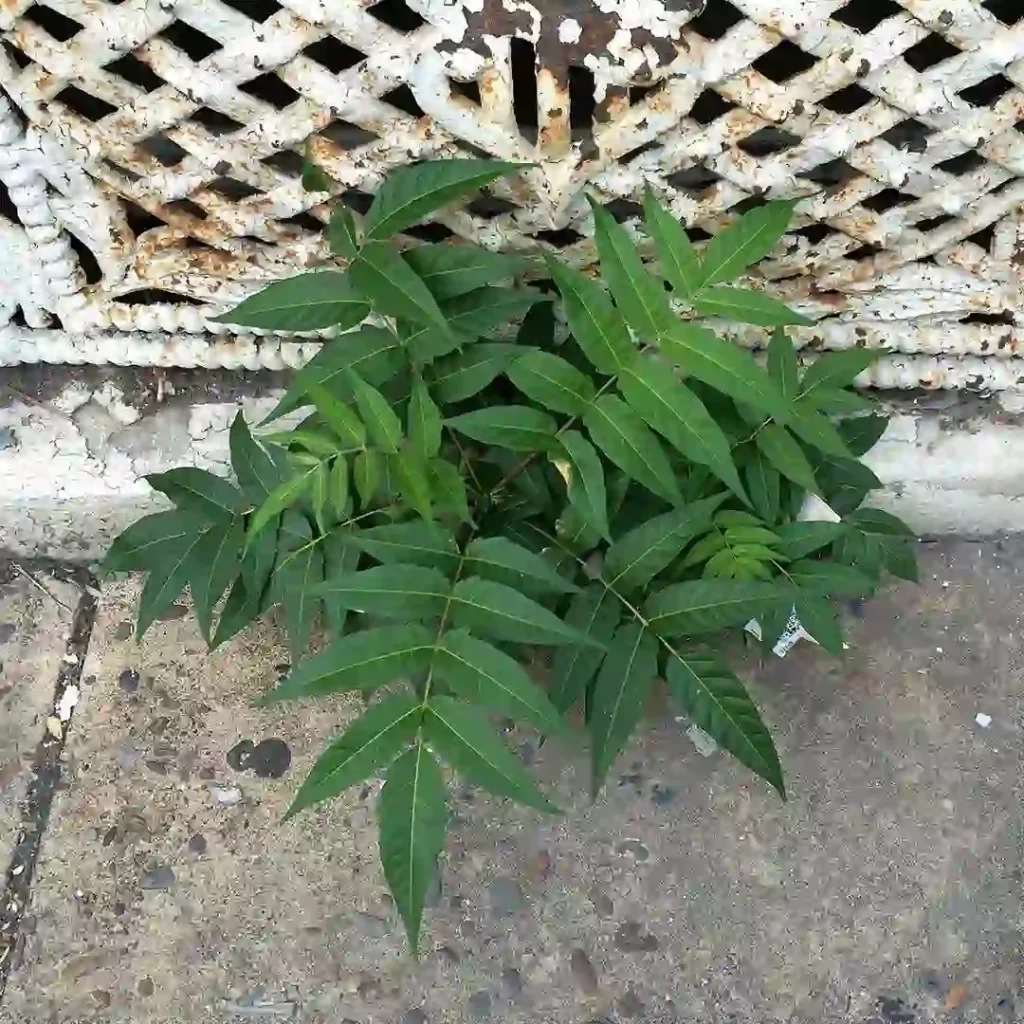
Dawn redwood tree (Metasequoia glyptostroboides)
Dawn redwood is a large living species of one of the three species of conifers known as redwoods which can grow 70-165 ft long. It is native to Lichuan country in the Hubei province of China.
The foliage is fern-like feathery, light-green in spring. This makes the dawn-redwood almost similar to bald-cypress and redwood.
The mature leaves are 1-3 cm long, and bright green that turns to foxy-red-brown in fall. They are arranged oppositely, not alternatively like bald-cypress. It makes the dawn-redwood leaf different from the bald-cypress-leaf.
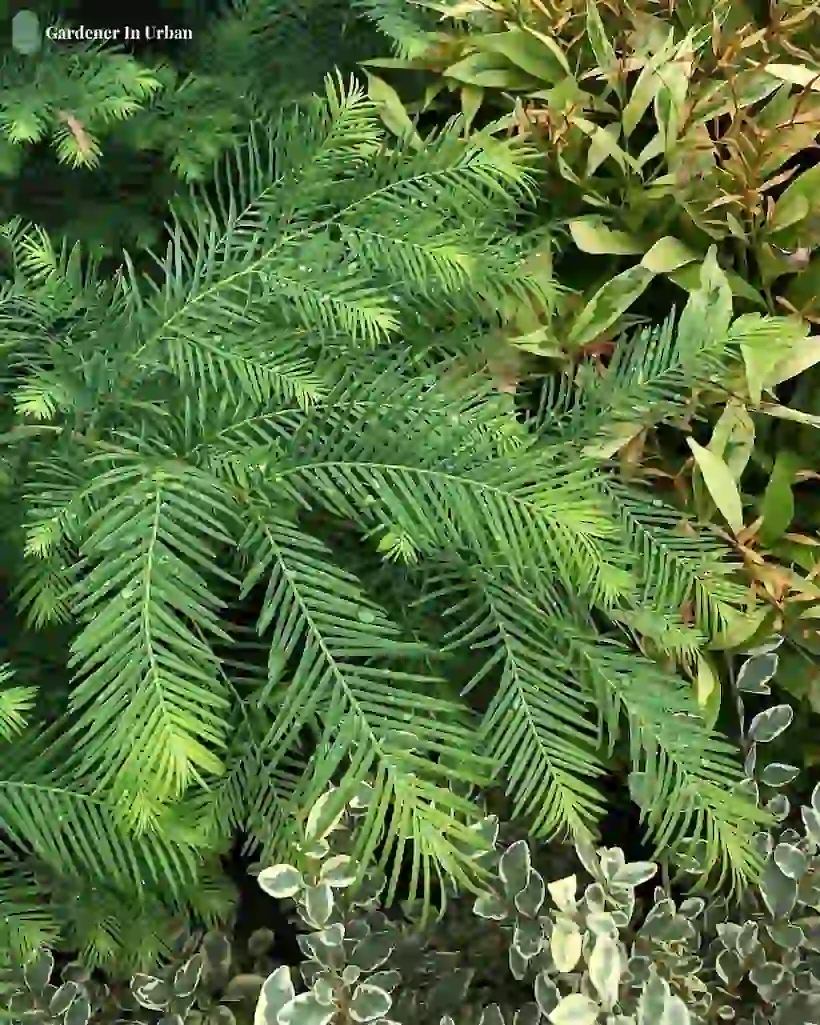
Sweet fern tree (Comptonia Peregrina)
Sweet fern is an aromatic, mound-shaped, and dense shrub of 2-5 feet long native to eastern North America.
The leaves of this plant are fern-like divided, 1-6 inches long, narrow, and olive-green. These leaves are linear to lanceolate-shaped with rolled-back edges and lobed margins.
This sweet fern produces unisexual and clustered flowers called brown catkins. The green fern-like leaves with this unique flower make the tree identical to the other native ferns.
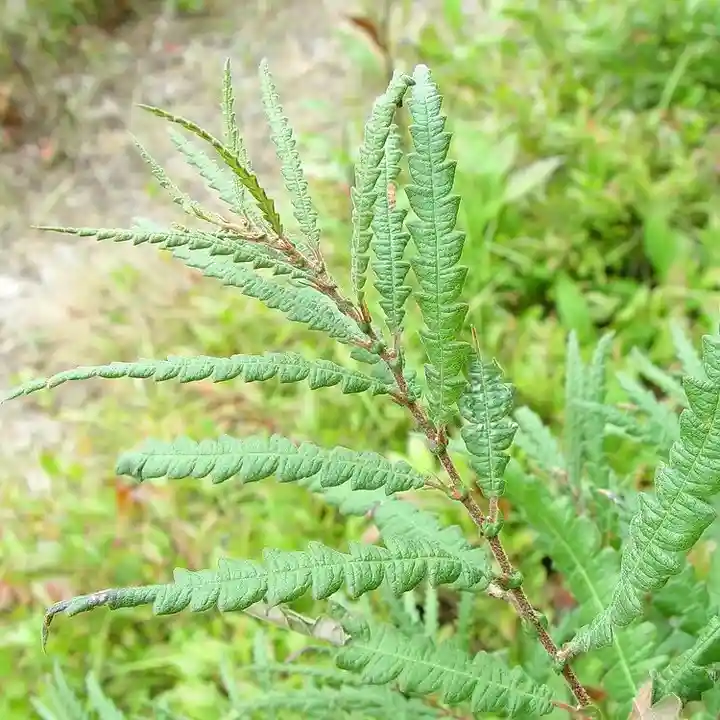
Soft tree fern (Dicksonia Antarctica)
Soft tree fern is a species of evergreen tree fern known as Man fern, Australian tree fern, Tasmanian tree fern, or wooly tree fern. It is native to eastern Australia (from south-east Queensland to coastal New South Wales and Victoria to Tasmania).
The leaves of soft tree ferns are large, glossy dark green, alternatively arranged, and bipinnate or tripinnate (sterile or fertile) having a rough texture.
These leaves are very attractive with gracefully arching and deeply divided terminal-rosette which make them distinctive.

Fern pine columnar tree (Podocarpus gracilior or Afrocarpus gracilior)
The fern pine columnar tree is an evergreen and medium-sized plant native to Africa. It is also popular as African fern pine, common yellowwood, bastard yellowwood, and Outeniqua yellowwood.
The leaves are fern-like, irregularly arranged (spirally arranged) and cylindrical or lanceolate shaped which grow up to 4 inches long. They are glossy blue-green.
This irregular and spiral arrangement and the blue-green color of the leaves make the plant unique and beautiful.
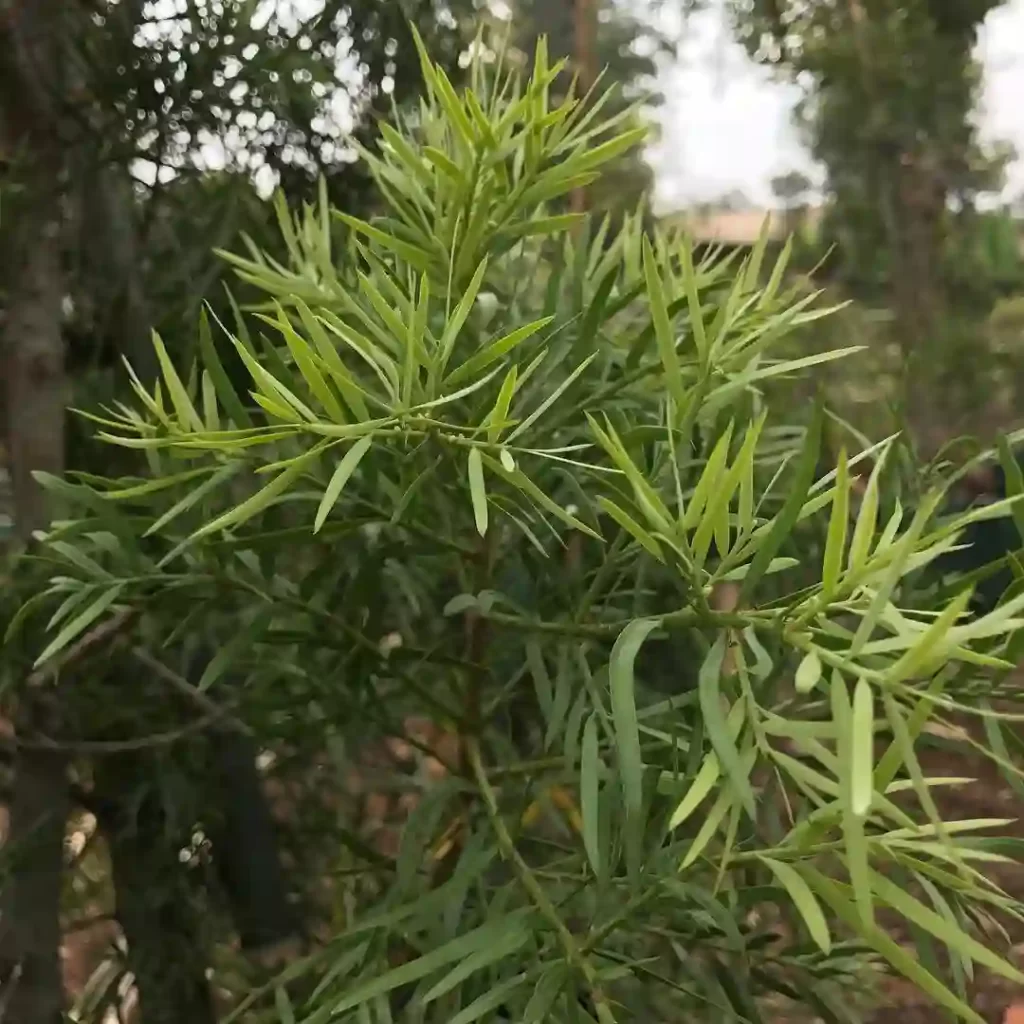
Final thoughts
Finally, we wrapped up our discussion at the endpoint. This article may you help to identify other alternative plants that have fern-like leaves. To clarify the concept, let’s recap this article.
- Sometimes, you may find a new species that will remind you of a fern tree or you may get confused.
- The trees mentioned above are just like them. These are adorable to many people for their fern-like foliage or leaves.
- Some trees can also give you beautiful foliage and flowering vibe and fragrance.
Hopefully, this content will be helpful if you want to know about some trees like this. Though we tried to cover up many trees, the beautiful and mysterious nature is always prepared to initiate newer varieties.

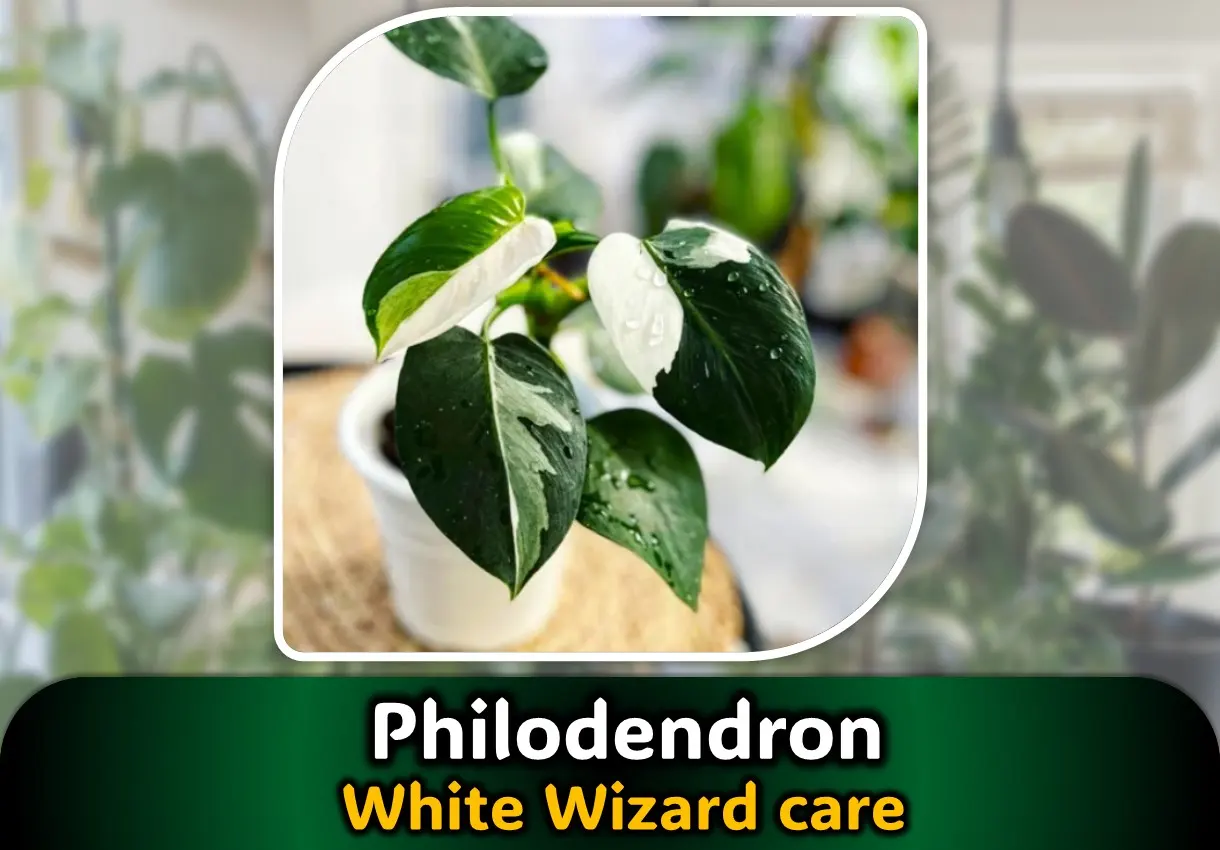
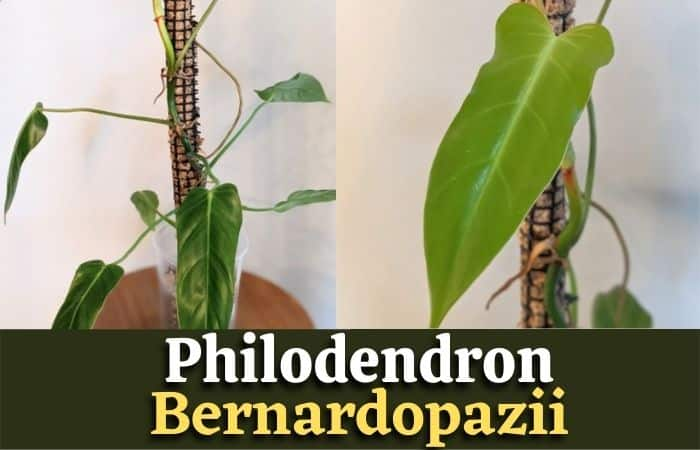
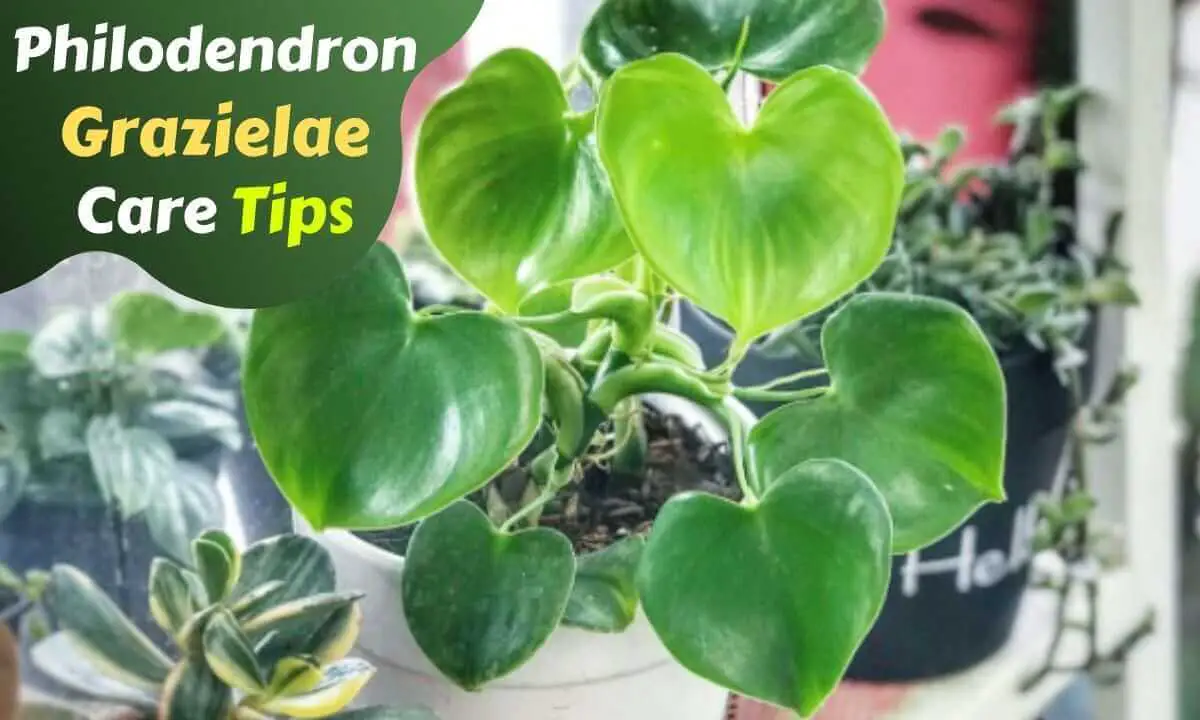
![Snake plant watering schedule – [Quantity, Time, Interval]](https://diaryforgardening.com/wp-content/uploads/2022/02/Snake-Plant-Watering.jpg)
![Alocasia Scalprum care, propagation, leaves problem [All you need to know]](https://diaryforgardening.com/wp-content/uploads/2022/09/Alocasia-Scalprum-Care.webp)

